Learn to Plant Garlic: How, When and Where to Do It [12 Steps]
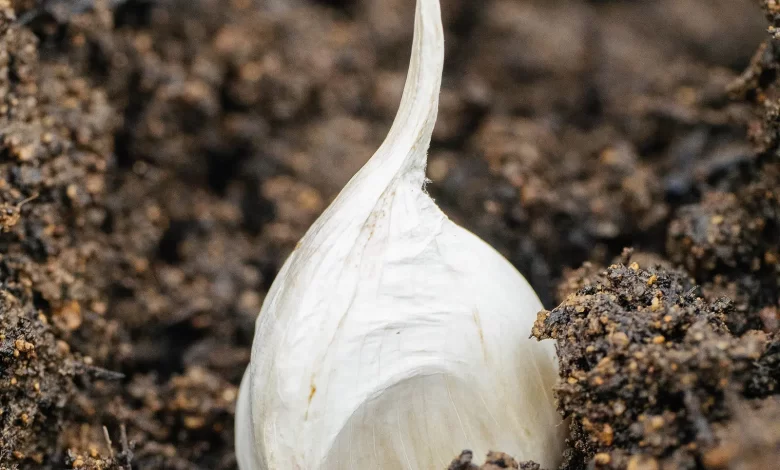
You will agree with me that garlic is an AMAZING food.
Not only for its nutritional properties, but for the flavor it brings to any dish.
Then…Is there anything better than growing your own garlic and making sure they are ORGANIC?
If this interests you, you’re in luck. Keep reading.
Important Points to keep in mind when Growing Garlic:
- When? Early Spring or mid-Autumn (November).

- Where? We choose a place with maximum sun exposure. They require a lot of light.
- How do we prepare the land? Plowing and paying. Soft soil rich in substrate. With pH between 6.5 and 7.0.
- And in a pot? We put a good handful of compost.
- How do we fertilize the land? Idealanimal manure.
- How do we start planting? We use our own garlic cloves. Checking that they are healthy and 2.5cm. We leave about 20c between each plant.
- How do we water? We use drip irrigation. They require moist soil.
- How often do we water? Every 3 days between 45-60 minutes, depending on the heat and how dry the soil is.
- What do we plant nearby? Lettuces, cauliflower, cabbage, beets, tomatoes, carrots, and roses. It also prevents pests if planted near yams.
- What do we NOT plant nearby? legumes ( peas, broad beans, beans, chickpeas …).
- What diseases and pests does it have? Onion fly, mildew fungus, grasshoppers and mice.
- When can we harvest? When the stems begin to take on a yellowish color. In about 3 months.
How to Plant Garlic Step by Step
- Till the soil and remove weeds.
- Fertilize the pot or the land where you are going to plant the garlic with animal manure and/or earthworm humus.
- You can do it from the seed, but for us the way that has given us the best results is to grow the garlic from a head.
- Take two heads of garlic and insert them a few centimeters from the ground.
- We leave about 20cm of separation between each head of garlic buried.
- We installed a drip irrigation system to give it constant water, but without flooding.
- In the hottest months we can water every 3-4 days, about 30-40 minutes.
- In the months of less heat, garlic hardly requires irrigation, the moisture property of the earth and the rains are enough for it.
- You will see how quickly the stem of the garlic plant comes out.
- Now it’s time to wait a few months until its harvest!
Garlic is a type of root vegetable and is known in many cultures for providing flavour, aroma and strength to all kinds of dishes. Thousands of years ago some cultures began to plant garlic.
Its presence stands out in Asian, Latin, European and African cuisines; they are versatile and do a great job in all the dishes they represent, although without becoming protagonists, they manage to make a luxury of their presence from the first bite.
Garlic consumption is ancient (study). It is believed to have originated in Central Asia and quickly spread to Egypt, India, and several Middle Eastern countries (where it is widely present to this day). At that time it was used as a medicinal and ancient herb.
Did you know…Did you know that garlic can also be effective as an anti-mosquito plant? What better than growing your own garlic and eating it at home?
To this day, garlic has become popular throughout the world, becoming an essential on our table and it is perfect for you to try planting it in your urban garden.
But what many people do not know is that garlic has also acquired a significant level of popularity as a vegetable in home gardens, providing multiple advantages and being ideal for beginner farmers.
Did you know…In ancient Egypt, the value of garlic became extremely high due to the belief that it greatly strengthened the health of the slaves who built the pyramids. In fact, a slave was worth only 7kg of garlic.
When to plant garlic?
Finding the best time to plant garlic is the first step.
Depending on the region you live in, if it is a four-season country, the best time to plant garlic will be early spring and mid-autumn.
If winter is very strong in the region where you live or there is significant snowfall, the ideal is to sow in spring; starting in April, for example.
start planting garlicbefore or after the coldest season passes;Keep in mind that garlic, although they are very resistant, can not survive temperatures below20 degrees Celsius below zero.
Although if the winters are not particularly strong, then you should heed the saying «garlic for Christmas, neither born nor to be sown, so plant in mid- autumn.», allowing them to develop during the holidays.
Therefore, during the winter you should not worry as long as the area where you have planted the garlic does not have temperatures below zero.
What if I’m in the tropics?
If, on the other hand, you live in a Tropical region, divided into rainy and dry seasons,you should know that garlic is not a good drinker; therefore, it is necessary to opt for the dry season, and prevent them from being exposed to humid periods or very hot (vapor in the environment).
A good trick for people who live in tropical climates is toplace the garlic in the refrigerator a few weeks before planting(in this way the growth and development of the garlic is stimulated).
Did you know…The legend that vampires are vulnerable to garlic could be because people suffering from porphyria (a disease whose symptoms resembled those of a vampire, such as poor tolerance for sunlight) could be seriously harmed if they ate or smelled garlic?
What is required for growing garlic?
 Do not worry, it is not particularly difficult and you can do it without problems in your home garden.
Do not worry, it is not particularly difficult and you can do it without problems in your home garden.
Here are some tips for you to learn how to plant garlic step by step in your own urban garden or home garden.
Prepare the ground(or the pot) is important as in most crops. You just have to make a good quality fertilized land, loose and with good drainage.
Garlic requires good levels of nitrogen (study) in the soil, so having good quality organic compost will be imperative.
 for your cultivationgarlic needs sun.So look for areas that have enough sunlight throughout the day.
for your cultivationgarlic needs sun.So look for areas that have enough sunlight throughout the day.
A good trick to obtain this type of fertilizer is to go to a nearby stable and ask to take the horse droppings with you.
Generally they do not have problems and it is a real shot for your garden.
You can sow garlic cloves (in this case we will call them seeds, but they can also be taken from the heads themselves) purchased from a local nursery, or alternatively, fresh garlic (make sure they are freshly harvested) from an organic supermarket; ask where this variety was harvested and make sure it is not imported (this way you will have a better chance of a successful harvest).
What should be planted next to the garlic?
Determine a sunny spot on your roof or orchard,the ideal companions to plant next to your garlic, can be lettuce, cauliflower, cabbage and beets.
Even if you want to be more creative, garlic is very romantic, and it loves roses; those who protect naturally from certain pests.
What should NOT be planted near the garlic?
On the contrary, they do not get along with legumes and legumes, as well as with cabbage, so you must take this into consideration when designing your garden.
The perfect place to grow garlic
 Once you have chosen a sunny spot, place a deep pot (or the corresponding soil space) with its dissolved soil and optimal drainage by opening small holes 6 centimeters deep in the soil.
Once you have chosen a sunny spot, place a deep pot (or the corresponding soil space) with its dissolved soil and optimal drainage by opening small holes 6 centimeters deep in the soil.
They must be ata distance of 10 centimeters each,make sure that the flat part of the garlic is facing down, and the pointed part is facing up, that way the garlic will grow correctly.
The garlic will begin to give stems approximately 11-15 days after planting, from this point it is important to take care of irrigation, sun exposure and the weeds that can grow around them, since they are not very good competitors in their initial states.
Prevents the flowering of garlic.Cut off any flowers that might come out on a stalk, especially if you planted in the spring.
The flowering causes the bulbs to develop smaller.
How often do you have to water the garlic?
 Water your garlic every 3 to 5 days (depending on the amount of rain that is present in the environment) at the moment you see that the soil is dry and dusty, that is when you will know that the garlic needs water, otherwise avoid watering it too much.
Water your garlic every 3 to 5 days (depending on the amount of rain that is present in the environment) at the moment you see that the soil is dry and dusty, that is when you will know that the garlic needs water, otherwise avoid watering it too much.
Garlic takes approximately 4 to 8 months to complete its development process until harvest, so you will have to be very patient.
The factors that will determine the speed of growth have to do with the variety of garlic used, the time of year in which they are planted and finally, the climatic conditions they are in (or even the planting partners they have by their side).).
At the moment of developing the garlic, they should show straight, green and strong stems, this will determine the internal state of your plant; Frequently checking the stems is very important to evaluate the internal development of the plant, which should never be removed until harvest time.
Did you know…Alexander Fleming discovered penicillin in 1928 and it largely replaced garlic as an anti-inflammatory and antiseptic. However, during World War II, garlic was once again widely used due to the inability to meet the demand for antibiotics. In fact, the Russians called garlic «Russian penicillin.»
There are other ways to plant garlic, such as in pots. You simply have to use a handful of homemade organic matter such as compost and place the cloves in the potting soil.
What enemies do garlic have? Plagues and diseases
Despite being very resistant to certain viruses and bacteria, garlic is not totally immune to all possible enemies of vegetables that are present in the environment.
In this sense, you should be especially careful to:
onion fly
As its name indicates, both the larvae and the developed fly love onions, chives, leeks and of course garlic.
Generally it is possible to see their black larvae or they lay eggs around the stem of the plant, so it is advisable to check the stem from time to time to anticipate their presence.
mildew fungus
Like the sowing of potatoes and known as Peronospora destructor, it requires cold and humid conditions for its development, although it survives in crop residues or in soil.
The spores can be spread by wind or through rain splash or sprinkler irrigation. You can see that the garlic planting is affected by the yellowish spikes on the leaves.

Sporulation increases when humidity increases, so it is necessary to control irrigation.
To prevent it, crop rotation, drip irrigation, removal of crop debris and orientation of the furrow in the direction of the prevailing winds are advisable, they can help prevent infection. It is recommended to apply preventive fungicides.
To combat fungi, you may be interested in this ecological fungicide: Copper Oxychloride.
Grasshopper
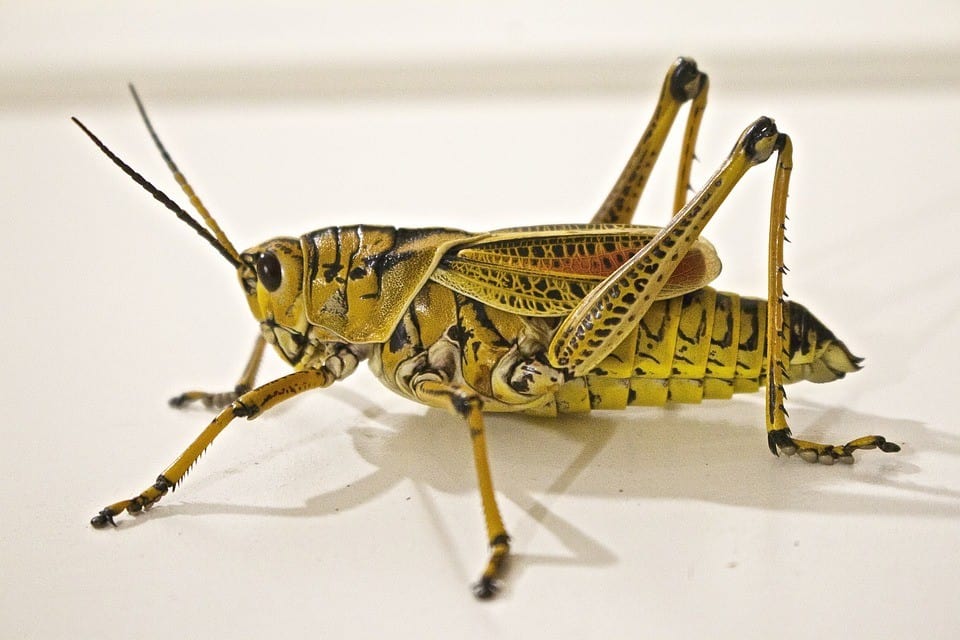 Prone to eating both the stems and the bulbs, in record time.
Prone to eating both the stems and the bulbs, in record time.
A good remedy to avoid them is to chop garlic that is ready to consume and spread it on the ground. Grasshoppers hate the smell of garlic and may be scared away.
Animals like cats and dogs can also repel these insects because they love to play with them and therefore hunt them.
Mice
Many mice make mousetraps around garlic plants, especially if they are being protected from the cold by a layer of moss. If that is the case, you should be aware of the presence of rodents that may be eating your garlic.
The best way to keep mice away is to have thief dogs or, of course, cats.
In the event that you could not have any of these animals, mouse or rat traps, although they do not work as well as dogs and cats, can also be used.
In most cases, there is not much to do when it comes to diseases, so preventive measures are very important and preparing soil and seeds correctly is very important, as is constant inspection of the plants, to prevent diseases or pests from spreading rapidly.
Did you know…In Homer’s Odyssey, Odysseus avoids turning into a pig because he ingests the garlic that Hermes gave him earlier?
When do we know that the garlic is ready to be harvested?
You will know that the garlic is ready at the moment in which the stems begin to take on a yellowish tone and decay, at that point, you can start harvesting your garlic, it is important not to harvest them before time (due to lack of maturation) or leave them too many days in a state of maturation, as the garlic bulbs can begin to deteriorate.
Pluck the garlic by holding the stem from the root and pull with a strong but not sudden movement, avoid breaking the bulb from the stem, you can help yourself with a shovel if it is complicated.
Later you should hang the garlic, ideally without separating it from the stem, in a dry place where it can be aerated and dried, this process is known as curing and lasts approximately 2 weeks, you should not consume the garlic before this process.
Did you know…The record for consumption of garlic cloves is held by the Nepalese Deepak Sharma Bajagain eating a whopping 34 cloves?
To find out more, read our guide: Harvesting garlic.
Is garlic production profitable?
Yes. In general, garlic cultivation can be profitable if it is done properly and if there is enough land.
For more information on this, check out this article.
When can you start cooking?
When the outer skin of the garlic looks dry and begins to peel off, you will know that the ideal time has come to consume your garlic. The process takes time, but it is highly rewarding, you can take advantage of this first harvest to prepare the second
With just a head of garlic!
You can use the rest in innumerable recipes, and boast that yes, they are your homemade garlic, from your home garden.
Garlic stalks can also be consumed, which finely cut and added to sauces or legumes give preparations a strong and spicy flavor, being on many occasions, an interesting option to garlic.
How do we store them so they last longer?
Garlic can be stored in a traditional way, placing them in a dry and ventilated place, tied to each other and hanging, (which also provides a very remarkable decorative favor).
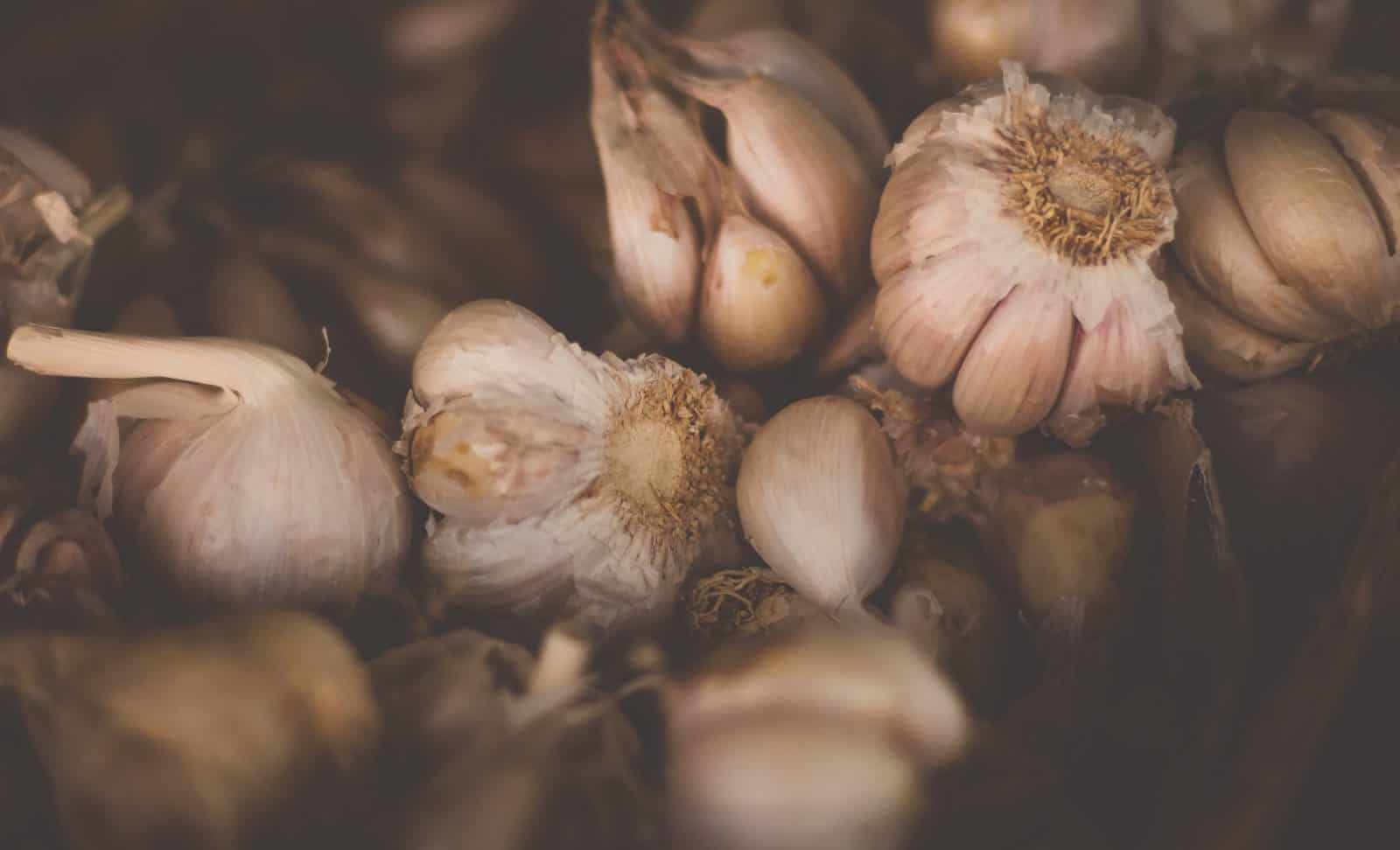 Another way is in the fridge, if the environment where it lives is very humid, and finally, in a dark and dry place.
Another way is in the fridge, if the environment where it lives is very humid, and finally, in a dark and dry place.
It is also possible to peel them and preserve them with oil, which can add an important edible and aromatic value to meals, prolonging the shelf life of our garlic and even creating the possibility of giving it away as a very interesting home gift.
To enjoy!
Garlic: A gastronomic friend at home
Garlic, whose smell and taste may be for many a non-acquired taste; For the vast majority, garlic is an unbeatable ally, whose presence is primary in all meals.
The benefits that garlic gives to health are ancient, some of the best known are:
- Improves cardiovascular health: Garlic helps improve blood circulation levels, making it more diluted, this contributes especially to people with risks of thrombosis (study, study and review).
- It is a natural antibiotic: widely used in ancient herbalism to help people prone to infections. Today it is commonly prescribed as a natural alternative to fungal treatments or general infections. It also strengthens the immune system and the healing of minor wounds (study, study)
- Helps detoxify the body in general: Helps purge toxins by cleansing the liver. In addition, because it is rich in vitamins A, B and C, it helps stimulate liver function; even for patients who already suffer from fatty liver, consuming a clove of garlic daily helps purify the body (review).
- Garlic is also an ally of the skin: and it fights nail fungus. Although its strong smell may persuade us to use it in our beauty routine, garlic is rich in antioxidants and helps maintain healthier, younger and smoother skin (study).
- Helps in digestive functions, controlling gastric problems such as acidity (study) and reflux and contributing to the health of the intestine, leveling the levels of bacteria, flora and avoiding diarrhea.
- In addition to the life it gives to all dishes and the benefits it gives to health, garlic is extremely easy to grow. It is good everywhere! And you will surely appreciate having an ally for your kitchen within reach of your window or your garden plot.
Did you know…It is estimated that garlic began to be planted more than 5,000 years ago and that there are also the first medical studies on the benefits it brings to health?
References and bibliography
-
[BOOK] Garlic: cultivation and use, CRG Alonso – 1998 – 181.176.223.4
-
Nitrogen fertilization in the cultivation of garlic (Allium sativum L.) under drip irrigation on the coast of Hermosillo, MA Huez-López, J López, J Jiménez… – …, 2010 – biotecnia.unison.mx
-
[BOOK] The cultivation of garlic, H Pinzón – 2009 – books.google.com
-
The cultivation of garlic, A Celis – Informative INIA Remehue, 1998 – library.inia.cl


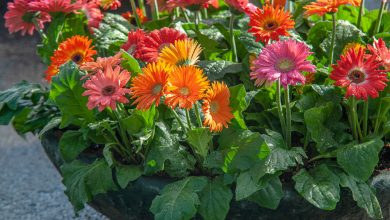
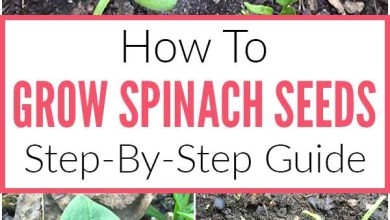
![Photo of Salix Caprea: [Characteristics, Cultivation, Care and Disadvantages]](https://www.complete-gardening.com/wp-content/uploads/2022/08/salix-caprea-characteristics-cultivation-care-and-disadvantages-390x220.png)
